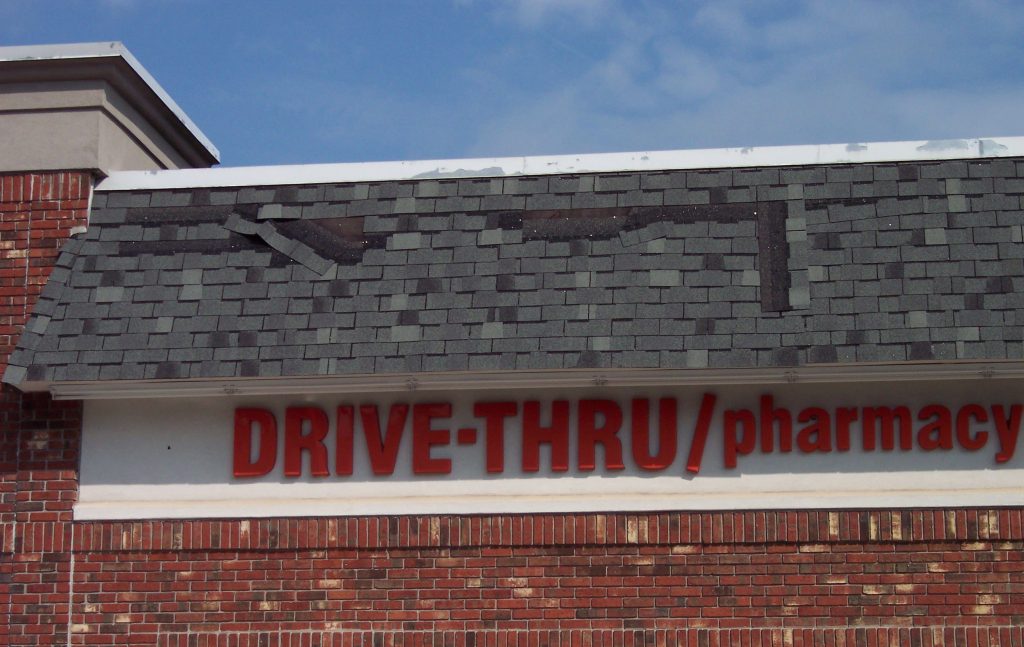Storms can wreak havoc on roofs, leaving behind a trail of damage that may not always be immediately apparent. Whether it’s heavy rain, pounding hail, or fierce winds, your roof bears the brunt of nature’s fury, protecting your home and loved ones. Recognizing the signs of roof damage after a storm is crucial to prevent further deterioration and costly repairs down the line. With strong storms in the forecast for Metro Atlanta tonight, here are the top signs to watch for:
Missing or Damaged Shingles
One of the most obvious signs of roof damage is missing or damaged shingles. High winds can lift shingles or cause them to crack, curl, or break. Inspect your roof for any noticeable gaps or areas where shingles are torn or completely missing.
Granule Loss
Asphalt shingles are coated with granules to protect them from the elements. After a storm, check your gutters and downspouts for an accumulation of granules, as this could indicate damage to your shingles. Loss of granules can compromise the integrity of the shingles, making them more susceptible to leaks and deterioration.
Leaks or Water Stains
Water stains on your ceiling or walls are clear indicators of a leaky roof. However, it’s essential to conduct a thorough inspection of your attic or crawl space, as leaks may not always be immediately visible from inside your home. Look for signs of water intrusion, such as damp insulation, mold growth, or water puddles.
Dented or Dinged Roofing Materials
Hailstorms can cause significant damage to roofs, especially to softer roofing materials like asphalt shingles or wooden shakes. Inspect your roof for any dents, dings, or indentations, particularly on metal flashing, vents, or skylights, which are more susceptible to hail damage.
Loose or Damaged Flashing
Flashing is installed around roof penetrations, such as chimneys, vents, and skylights, to prevent water from seeping into your home. After a storm, check for any signs of loose or damaged flashing, as gaps or cracks can allow water to infiltrate your roof and cause leaks.
Sagging or Drooping Areas
Heavy rainfall or snow accumulation can place excessive weight on your roof, causing it to sag or droop in certain areas. If you notice any visible sagging or dipping in your roofline, it’s essential to address the issue promptly to prevent structural damage and potential collapse.
Clogged Gutters and Downspouts
Storm debris, such as leaves, branches, and dirt, can accumulate in your gutters and downspouts, obstructing proper drainage and causing water to pool on your roof. Regularly clean and inspect your gutters after a storm to ensure they are free from blockages and functioning correctly.
Cracked or Damaged Roof Ventilation
Roof vents play a crucial role in maintaining proper airflow and ventilation in your attic. Inspect your roof vents for any signs of damage, such as cracks or dislodged components, which can compromise their effectiveness and lead to moisture buildup and mold growth.
Being proactive in inspecting your roof for damage after a storm can help prevent minor issues from escalating into major headaches. If you notice any of the aforementioned signs of roof damage, it’s advisable to consult with a professional roofing contractor to assess the extent of the damage and recommend appropriate repairs or replacements. Remember, timely action can save you time, money, and stress in the long run, ensuring your roof remains strong and resilient against future storms.
Atlanta Roofing Specialists is a full service residential and commercial roofing contractor serving Metro Atlanta since 1993. For a no-obligation inspection call (770) 419-2222 today!

